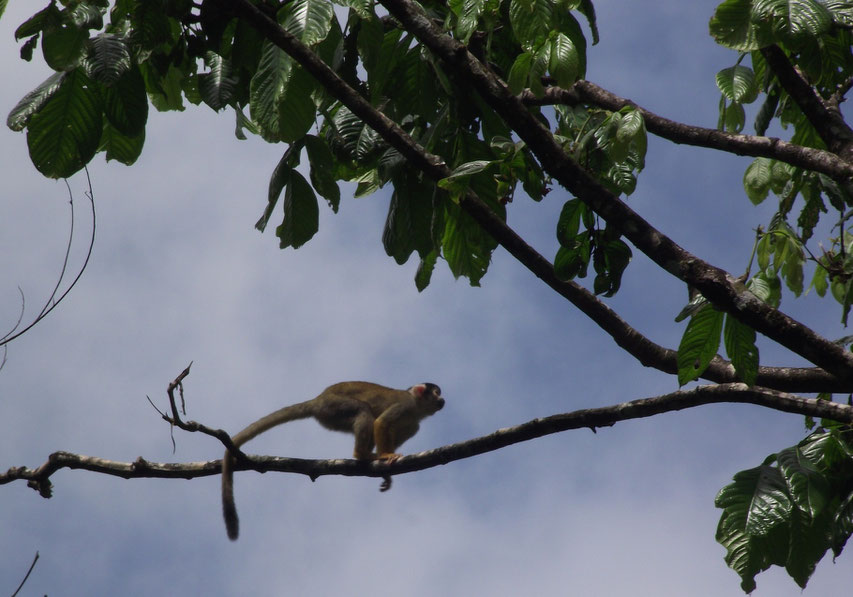
I've been putting off writing this for months...
My last post from Bolivia? The last post from South America and the eight month adventure that Dan and I drew out for as long as physically possible. We had to fly back at the beginning of this year- it's already April, but I still can't quite get over it!
Anyway... the post is entitled "bumbling" as by this stage in the journey we had extremely dwindling funds and really no idea what we were going to do for another two months. Not everywhere we went I could recommend, but I'll share all the information in case you find yourself in a similar situation. Otherwise just sit back and enjoy the monkeys.

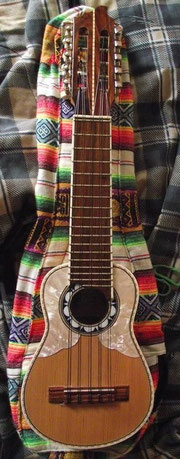
Oruro
The sprawling mining city of Oruro would have been an unlikely resting spot on are long journey East, had it not been for Dan's love of weird and wonderful instruments. Having been pining over charangos since Peru, it was getting increasingly obvious that the time to buy one was now or never. The more touristy the town, the more expensive they were, but we'd heard you could find a good price in Oruro.
They weren't difficult to find near the train station (on Velasco Galvarro I think) and though £40 at that moment seemed absurd, knowing how little that money was worth back in the UK, I bit the bullet and bought one as an early Christmas present.
Traditionally, the charango is made from the armour of a “quirquincho” (armadillo), which is incidentally Oruro's emblem. We didn't quite have the stomach for that and chose one in wood.
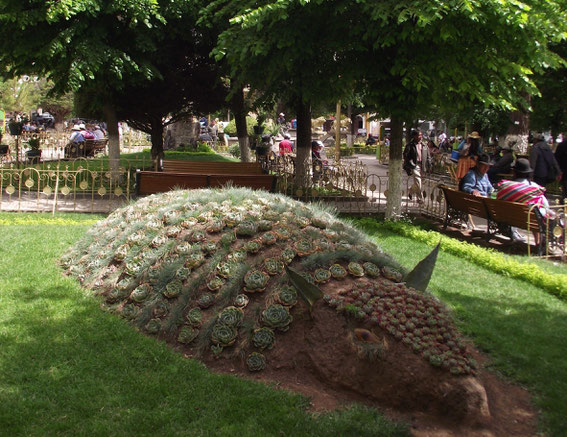
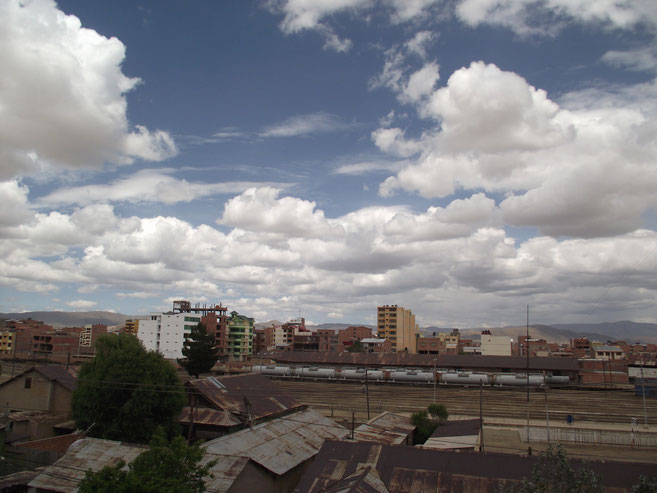
As a city, it's half falling down or stuck somewhere in the stages of construction, the streets are grimy, but I kind of loved it. Ramshackle markets flood the streets creating layers of produce that leave some a corridor barely wide enough to walk down.

Giant corrugated iron roofs cover labyrinths of food stalls and incredibly people have created tiny cafes of plywood and cardboard inside. Sat in this minuscule sandwich shop, Dan with his knees
near his chin and me wedged in sideways behind a table, we were proudly told of the famous Carnaval de Oruro which takes place at the beginning of March. We tried not to poke each-other
with our elbows as we ate our egg sandwiches and listened to her love of the city.
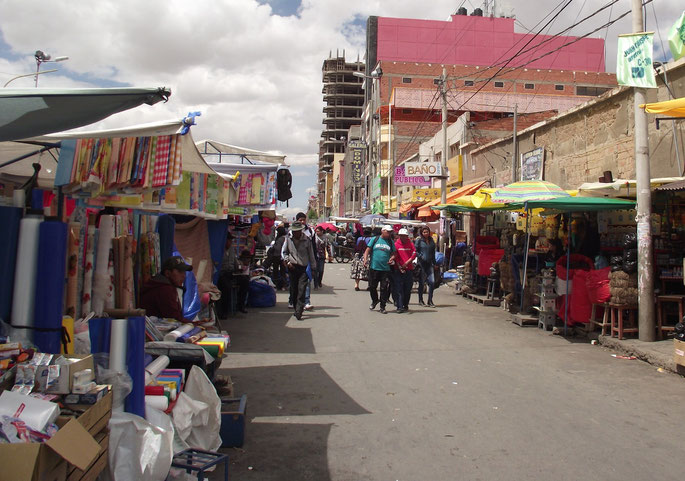
It's obvious that Oruro is economically struggling- there were more bleary eyed drunk men on the streets than I'd noticed elsewhere, a bit of a rubbish problem and we got caught walking the wrong way against a protest march.
Despite all of this, the overshadowing atmosphere was positive. We tried a huge range of fatty street food (don't miss cheesy yukka if it's offered to you) and enjoyed watching the weekend's celebration march past our hostel. Most of all, the city felt real and I clung onto that as our days felt more and more final.
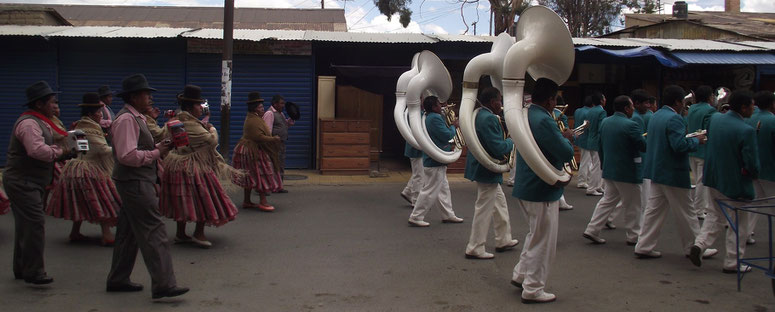
Cochabamba - For us, Cochabamba was a disaster. With a population of nearly two million, we should never have underestimated its size, but hearing the area near the bus station was unsafe we decided to walk into the centre. It was hot, uncomfortable with a sweaty bag and once we found the fancy centre, it was soon apparent that we had come to the wrong place. Hotel after hotel quoted us prices ten times higher than we could really afford.
Finally we found the "backpacker" alternative.
At 50Bs each a night Residencial Familiar was still quite pricey by Bolivian standards, but significantly more affordable than the rest. Unfortunately our extra Bolivianos, paid in the name of safety and sensibleness, were gone in vain. After around quarter of an hour of faff trying to get into the first room we were given, we discovered that once open the door wouldn't actually shut. Unusually for us we complained and asked to be moved. With much more ado, we were eventually taken across the hall to another much larger dorm room that they said we could have to ourselves. This room had two full walls of windows which faced out into the corridor and helpfully, neatly smashed holes in the glass just big enough for a hand to reach through to the lock inside. Although deteriorating buildings are normal in Bolivia, the strategic placement of the holes made us very wary- we barricaded the doors while we tried to sleep, before being woken at 5am by workmen drilling into the wall next door.
We left in the morning...
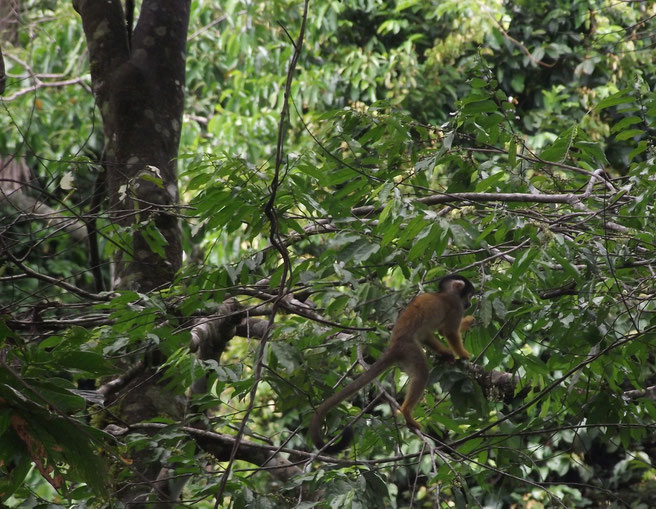
Villa Tunari
The journey from Cochabamba to Villa Tunari was inarguably a more breathtaking Amazon experience than the town itself. As our rickety bus swerved through rocky ravines, avoiding oncoming trucks by a hair's breadth, we watched the rainforest thicken. Leafy stragglers clung onto high, exposed outcrops and I began to spot bird of paradise flowers (the epitome of exotic flora to my mind) along the banks.

I would have loved to stay in this region of mountainous national park on the fringes of the Amazon, but as we drew closer to Villa Tunari, the land began to flatten.
Our bus and its passengers groaned in the oppressive heat until suddenly a tremendous noise cracked from underneath us. We jolted in our seats and I briefly wondered if this was it before we
began to slow down to a snails pace. Crawling along the road now, we were oblivious to our driver's plan to visit a nearby garage and sat gingerly in our seats.
Examining the damage outside, we saw that one of the tires had exploded! Luckily this bus had double wheels at the back or I shudder to think what might have happened. Men and women alike relieved themselves on the verge (I've never been so jealous of those voluminous traditional skirts) as the sweaty men changed the tire and then we were on our way.
Arriving in Villa Tunari was a definite bumbling phase for Me and Dan- looking for a campsite we lugged our bags through the sweltering humidity, over a pavement-less bridge where logging trucks hurtled past, around in circles, asking the price of every accommodation we could find. Money was getting impossibly tight and we ended up staying in the cheapest place we could find, with a beautiful view of the highway. To save a little more we squeezed onto a single bed and sweated through the night to the music of floor shuddering traffic noise. It was grim.
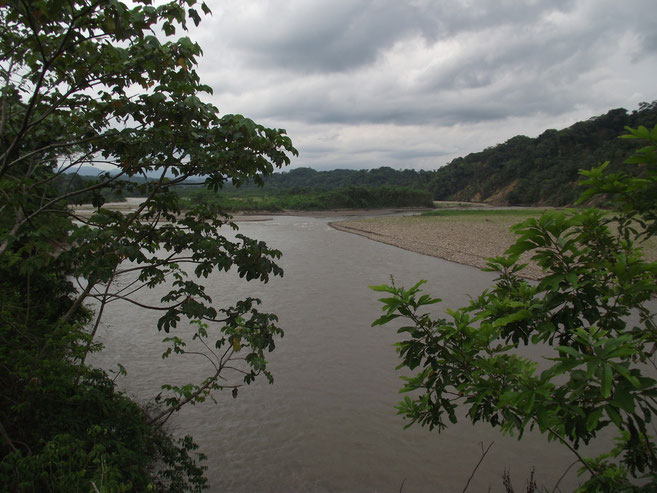
In the morning, after another futile search for camping, we tried to escape the road. The constant rumble of giant logging lorries was a sobering reminder of the Amazon's dark side and I wanted to be somewhere where the forest was still winning. The two rivers, on either side of Villa Tunari, are a peaceful escape if you can find a place to climb down the bank or sit on a little beach.
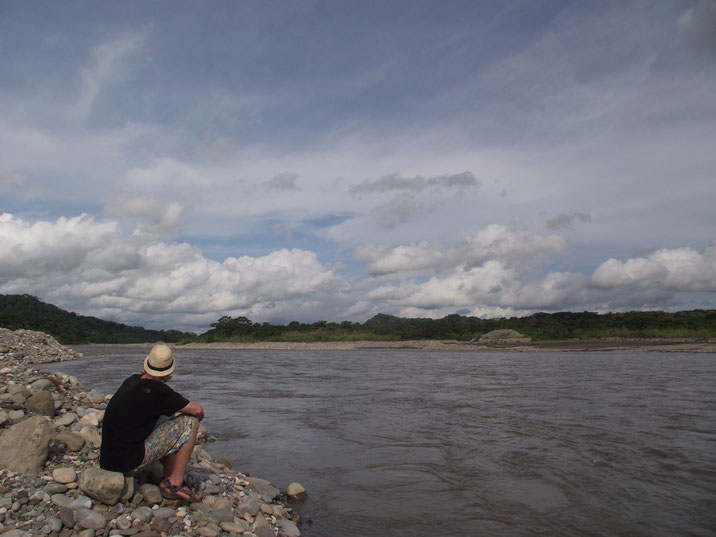

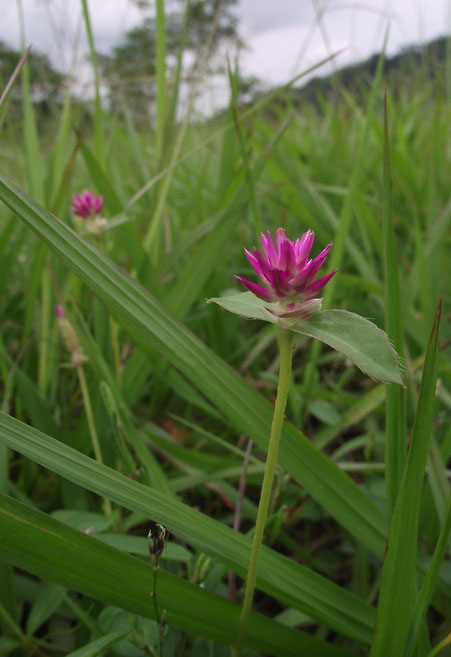

In town there is little to go mad for apart from the huge variety of rainforest fruits and vegetables. The bustling covered market is the cheapest place for breakfast and a good way to meet local people. Many of the foreign visitors to don't seem the type to eat at market stalls, but we got a friendly welcome and interesting conversation when we did.
Be sure to try a banana shake and look out for cheap delicious mangos, fresh coconuts and pink bananas on the fruit stalls. You might disagree, but I'd say those small yellow spiky things near the top right hand corner are best avoided!
The central plaza is a decent place to relax and watch the colourful birds flit between trees...
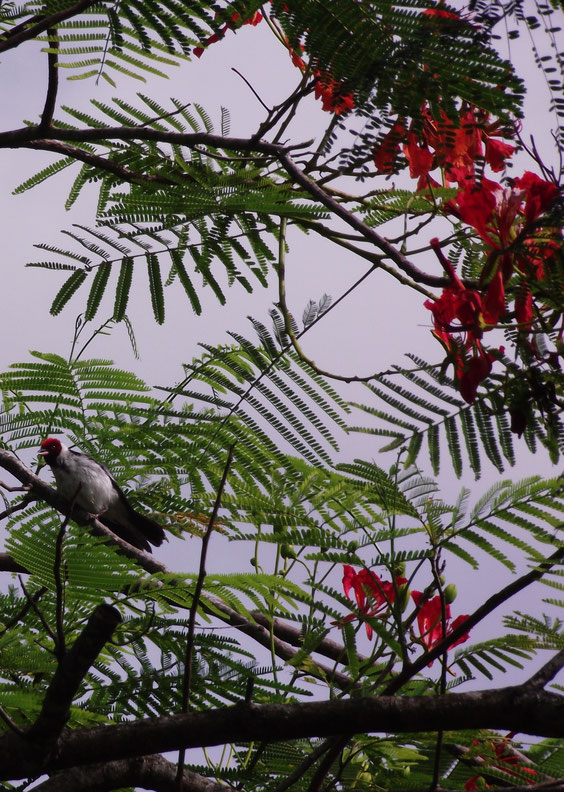

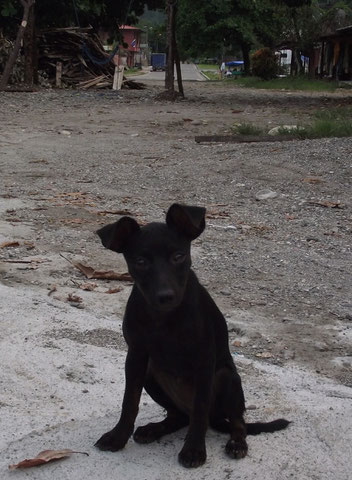
Machia Park, home to a variety of monkeys and other animals, seems to be one of the main draws to Villa Tunari. It wasn't open when we arrived, but we cluelessly wandered in regardless. It was great to be in the forest, but I found the whole experience a little troubling. We're told that these are rescued animals- caringly looked after by foreign volunteers. It all seemed pretty good until we met one of the workforce- seemingly unfazed she told us it costs 100 Bolivianos a day for volunteering, there is a minimum stay of fifteen nights, they work from dawn until dusk and only have one day off a fortnight... Even worse for me was that some of the bigger animals were kept tethered on ropes.
Maybe I'm being unfair, and I did enjoy walking around trying to spot the free, leaping spider monkeys, but I feel like this establishment isn't quite as non-profit as it would like you to believe.
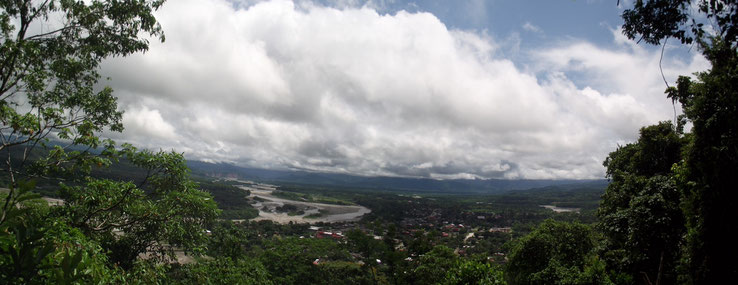

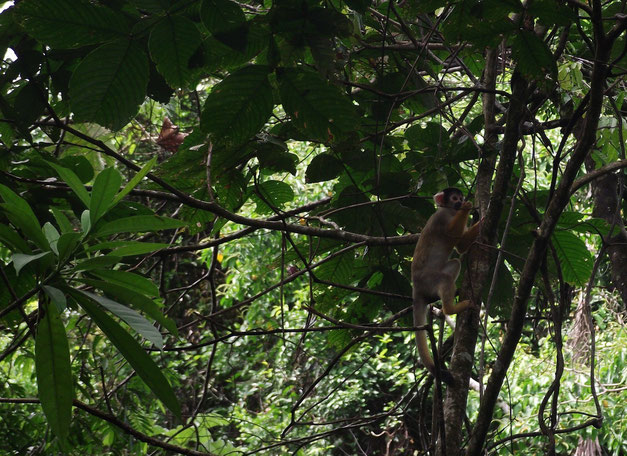

Samaipata
If you follow my blog, you'll know that we struck gold in Samaipata. What I haven't yet mentioned is the 'zoo'- Zoológico El Refugio. After Machia Park, I was a little dubious about visiting another wildlife rescue centre in Bolivia, but glowing recommendations from other campers at El Jardin persuaded me I should give it a chance.

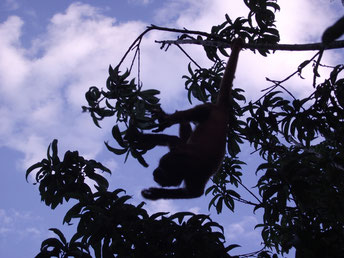
As far as I could tell from looking around and talking to volunteers here, these animals are doing pretty well. Most of the monkeys as free to come and go as they please and those that are in cages seem to have a fair amount of space, varied food and interesting places to inhabit.
With stray cats and dogs living around the tiny rescue park too, there's an interesting power dynamic where the monkeys definitely come out on top. It's weird and a little disturbing to watch the bullying, but I have no idea what could ever be done to separate them.

Other animals that are looked after here are these grumpy tortoises, a type of little wild cats, talking parrots, owls, colourful birds and the less exotic, but tricksy horses which we accidentally let out of their field (and herded back in again before anyone noticed).
I'm sure the little warble coming from this thing below was an attempt at communication. I couldn't help but leave a little bit in love with it...

Useful Information (to avoid copying our bumbling)
Accommodation
- In Oruro Residencial San Miguel was nothing special, but had the best prices we could find, clean beds and friendly staff. There was even wifi.
- Cochabamba- don't stay in Residencial Familiar unless you have to.
- Try and find somewhere away from the highway if you stay in Villa Tunari. If you have a little extra money it would be well worth it. Hostal Mirrador has a lovely view of the river.
- In Samaipata I loved the eco-built El Jardin camping and accommodation so much I dedicated a whole post to it.
- If you really want to get out into the forest and live life the simple way, go and visit our friend Pedro at Espiral de Luz.
Transport
- La Paz to Oruro- bus from the main bus station (Terminal de Buses) in La Paz. It took about 5 hours (supposed to be three, but we got stuck in traffic in La Paz) and costs between about 20 Bolivianos.
- Oruro to Cochabamba is about four hours and costs about 30Bs.
- Cochabamba to Villa Tunari- buses leave from Avenida Oquendo and Avenida Republica in Cochabamba and take about 6 hours- ask someone to tell you where to get off! Sorry, I forgot to write down the price, but it should be around 30bs I think.
- Villa Tunari to Santa Cruz- we payed 40Bs, but that was a rip off. Wait on the side of the road early in the morning and try to catch a bus for 20/30bs.
- Santa Cruz to Samaipata- You can reach Samaipata in three hours from Santa Cruz by minibus for 30bs per person. Find the minibuses a couple of blocks from the old bus station (ex-terminal) on Calle Omar Chavez.
Other bumbly journeys you might enjoy...
- Trinidad: Immigration officals, a journey up North and a few days on the beach doing absolutely nothing.
- Why you should never pay to see the Great Ocean Road, Australia.
- Hitchhiking Sydney to Melbourne, Australia.
- ...and the whole "high road" series though the central highlands of Peru: La Union to Huanuco, Cerro de Pasco and the rock forest, Huancayo, the train and Huancavelica, Ayacucho to Cusco.
More of Bolivia...
